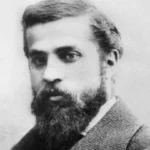
Welcome to our exploration of one of the most iconic figures in American history! In this blog post, we will delve into the life and legacy of the first President of the United States, George Washington. From his early years as a surveyor to his pivotal role in the American Revolution and his presidency, Washington’s journey is filled with fascinating details that shaped the nation. Whether you’re a history buff or simply curious about the man behind the myth, these intriguing facts will provide you with a deeper understanding of Washington’s character, achievements, and enduring influence. Join us as we uncover the lesser-known aspects of his life that continue to resonate today!
Delaware River Crossing (1776): On the night of December 25-26, 1776, George Washington led a pivotal military maneuver by crossing the icy Delaware River. This daring operation was part of a surprise attack against Hessian forces in Trenton, New Jersey. The successful assault revitalized the morale of the Continental Army and marked a significant turning point in the American Revolutionary War, demonstrating Washington’s leadership and strategic foresight.
Raised on a Virginia Plantation: George Washington was born into a plantation family in Virginia, where he received a limited formal education. His upbringing on the plantation involved learning practical skills rather than academic subjects, which shaped his character and work ethic. This background influenced his later views on land ownership and farming, as he became a prominent plantation owner himself.
Surveyor Before Military: Before his military career, Washington worked as a surveyor in the Virginia wilderness, gaining valuable experience in land measurement and mapping. This role not only honed his skills in geography and navigation but also provided him with an understanding of the land that would later serve him well in military campaigns and land management.
Virginia Militia and French and Indian War: Washington’s military career began when he joined the Virginia militia during the French and Indian War (1754-1763). He quickly rose through the ranks, gaining experience in combat and leadership. His early encounters in this conflict, including the Battle of Fort Necessity, laid the groundwork for his future military strategies during the Revolutionary War.
Birth in Virginia (February 22, 1732): George Washington was born on February 22, 1732, in Westmoreland County, Virginia. His birth into a prominent planter family positioned him within the social elite of colonial Virginia. This environment would shape his values and aspirations, as he grew to become a key figure in American history.
Death at Mount Vernon (December 14, 1799): Washington passed away on December 14, 1799, at his beloved estate, Mount Vernon. His death marked the end of an era, as he was not only the first president but also a symbol of the new nation. His passing was mourned nationwide, and he was buried at Mount Vernon, where his legacy continues to be honored.
Commander-in-Chief of the Continental Army (1775): In 1775, the Second Continental Congress appointed Washington as the Commander-in-Chief of the Continental Army. His leadership was crucial in organizing and training the troops, as well as strategizing military campaigns against British forces. Washington’s ability to inspire and unite the diverse colonial forces was key to the eventual American victory.
Marriage to Martha Dandridge Custis (1759): George Washington married Martha Dandridge Custis, a wealthy widow, on January 6, 1759. Their union brought him considerable wealth and social standing, as Martha was a prominent figure in Virginia society. Together, they managed Mount Vernon and were known for their hospitality and involvement in community affairs.
Valley Forge Winter (1777-1778): The winter at Valley Forge was one of the most challenging periods for Washington and his troops during the Revolutionary War. From December 1777 to June 1778, the army faced severe cold, food shortages, and disease. Washington’s leadership during this difficult time was instrumental in maintaining troop morale and discipline, ultimately leading to a more cohesive and effective fighting force.
What Did George Washington Do?: George Washington played a multifaceted role in American history as a military leader, statesman, and the first President of the United States. He led the Continental Army to victory in the Revolutionary War, presided over the Constitutional Convention, and set many precedents as president, including the establishment of a cabinet and the two-term limit for future presidents.
Unanimous Election as First U.S. President (1789): In 1789, Washington was unanimously elected as the first President of the United States by the Electoral College. His election reflected the nation’s trust in his leadership and character. Washington’s presidency set the tone for the new government and established many protocols that would guide future administrations.
Victory at Yorktown (1781): Washington’s leadership was pivotal in the victory at the Siege of Yorktown in 1781, where British General Cornwallis was forced to surrender. This decisive victory effectively ended major combat operations in the Revolutionary War and solidified Washington’s reputation as a military strategist and national hero.
Two Terms as President (1789-1797): Washington served two terms as president from 1789 to 1797, becoming the only president to do so without party affiliation. His leadership during these years helped stabilize the new nation, and he focused on establishing a strong federal government while navigating the challenges of a young republic. Washington’s presidency was marked by significant events, including the establishment of the Bill of Rights and the creation of a national bank, which laid the groundwork for the future economic system.
Neutrality Proclamation (1793): In 1793, Washington issued the Neutrality Proclamation, which declared the United States neutral in the conflict between France and Great Britain. This decision reflected his belief in avoiding entanglements in foreign wars, emphasizing the importance of national unity and stability. The proclamation set a precedent for American foreign policy and underscored Washington’s vision for a nation that would prioritize its own interests.
Farewell Address: Washington’s Farewell Address, delivered in 1796, is one of his most enduring legacies. In it, he warned against the dangers of political parties and foreign alliances, urging Americans to prioritize national unity. His insights on the need for a balanced government and the importance of civic virtue continue to resonate in American political discourse today.
Ownership and Freedom of Slaves: Throughout his life, Washington owned enslaved people at Mount Vernon. However, he made the decision to free them in his will, which took effect after his wife Martha’s death. This action reflected the complex views he held about slavery and freedom, and it has sparked significant discussion about his legacy in the context of American history.
Non-affiliation with Political Parties: Washington is notable for being the only U.S. president not affiliated with a political party. He believed that political factions could lead to divisiveness and weaken the nation. His stance on avoiding party politics was evident in his Farewell Address, where he cautioned against the rise of partisan divisions that could threaten national unity.
Whiskey Rebellion (1794): In 1794, Washington led federal troops to suppress the Whiskey Rebellion, a violent protest against the excise tax on whiskey. This decisive action demonstrated the federal government’s authority and willingness to enforce its laws. Washington’s leadership during this crisis reinforced the principle that the government would maintain order and uphold the rule of law.
Father of His Country: George Washington is often referred to as the “Father of His Country” due to his pivotal role in the founding of the United States. His leadership during the Revolutionary War, his contributions to the Constitutional Convention, and his presidency established the framework for the nation. This title reflects the deep respect and admiration that Americans have for his contributions to their independence and governance.
Inheritance of Mount Vernon: Washington inherited Mount Vernon from his half-brother Lawrence Washington in 1761. The estate became a symbol of his identity and success as a planter and landowner. Under his stewardship, Mount Vernon expanded significantly, and Washington implemented innovative agricultural practices, making it a model plantation of its time.
Serving Outside Washington, D.C.: Washington was the only president to serve before the establishment of Washington, D.C., as the nation’s capital. He initially conducted presidential duties in New York City and later in Philadelphia. His selection of the site for the new capital along the Potomac River was influenced by his vision of a strong federal city that would unite the nation.
Height of 6 Feet 2 Inches: Standing at about 6 feet 2 inches tall, Washington was considered quite tall for his time, which contributed to his commanding presence. His stature and physical prowess were often noted by contemporaries, and they played a role in his ability to inspire confidence and leadership among his troops and peers.
False Teeth Made of Ivory: Contrary to popular belief, Washington’s false teeth were not made of wood but rather crafted from materials such as ivory, gold, and human teeth. His dental issues were well-documented, and he suffered considerable pain throughout his life. The myth of wooden teeth has persisted, but his actual dental appliances were quite sophisticated for the era.
Portrait on Currency: George Washington’s image is prominently featured on the U.S. one-dollar bill and the quarter, symbolizing his status as a national icon. His likeness on currency reflects the esteem in which he is held and serves as a reminder of his foundational role in American history.
State of Washington: The state of Washington, located in the Pacific Northwest, was named in honor of George Washington. Established in 1889, it was the first U.S. state named after a president. The name reflects Washington’s enduring legacy and the respect he garnered as a leader who played a crucial role in the formation of the United States.
FAQs about George Washington:
1. What were George Washington’s major accomplishments?
George Washington’s major accomplishments include leading the Continental Army to victory during the American Revolutionary War, presiding over the Constitutional Convention of 1787, and serving as the first President of the United States from 1789 to 1797. He is credited with establishing many protocols for the new government and setting a precedent for future presidents. His leadership helped unify the nation and laid the groundwork for the United States’ democratic principles.
2. When was George Washington born and when did he die?
George Washington was born on February 22, 1732, in Westmoreland County, Virginia. He passed away on December 14, 1799, at his plantation, Mount Vernon, also in Virginia. His life spanned 67 years during a transformative period in American history.
3. What role did George Washington play in the American Revolution?
George Washington served as the commander-in-chief of the Continental Army during the American Revolution. Appointed by the Second Continental Congress in 1775, he led American forces against British troops in several key battles, including the Siege of Boston, the Battle of Trenton, and the Siege of Yorktown. His strategic leadership and ability to inspire troops were crucial to the American victory.
4. Why is George Washington called the “Father of His Country”?
George Washington is often referred to as the “Father of His Country” due to his pivotal role in the founding of the United States. His leadership during the Revolutionary War, his influence in the drafting of the Constitution, and his precedent-setting presidency all contributed to shaping the nation. His commitment to the principles of democracy and governance established a foundation for the United States.
5. Did George Washington own slaves?
Yes, George Washington owned enslaved people during his lifetime. He inherited his first enslaved workers from his father and later acquired more through marriage and purchase. However, Washington’s views on slavery evolved over time. In his will, he made provisions to free his enslaved workers after the death of his wife, Martha Washington, marking a significant step for a prominent figure of his time.
6. What were George Washington’s views on political parties?
George Washington was wary of political parties. In his Farewell Address in 1796, he warned that political factions could lead to the erosion of national unity and the rise of partisanship. He believed that political parties could create divisions that would undermine the principles of democracy and the common good.
7. What was George Washington’s stance on foreign policy?
George Washington advocated for a policy of neutrality in foreign affairs. He believed that the United States should avoid entanglements in European conflicts, focusing instead on building a strong, independent nation. His Farewell Address emphasized the importance of steering clear of permanent alliances, a principle that influenced U.S. foreign policy for many years.
8. How did George Washington become President?
George Washington was unanimously elected as the first President of the United States in 1788 and again in 1792. His election was largely due to his reputation as a leader during the Revolutionary War and his role in the Constitutional Convention. Washington’s decision to accept the presidency was motivated by his desire to serve the country, despite his initial reluctance to hold political office.
9. What legacy did George Washington leave behind?
George Washington’s legacy includes his role as a unifying figure in the founding of the United States, his establishment of the presidency as a respected office, and his commitment to democratic principles. He set important precedents, such as the two-term limit for presidents and the importance of a peaceful transfer of power. His leadership and character continue to inspire leaders and citizens alike.
10. Where can I learn more about George Washington?
To learn more about George Washington, you can explore various resources, including biographies, historical documentaries, and online archives. The National Archives, the Library of Congress, and the Mount Vernon website offer extensive information about his life, writings, and contributions to American history.









